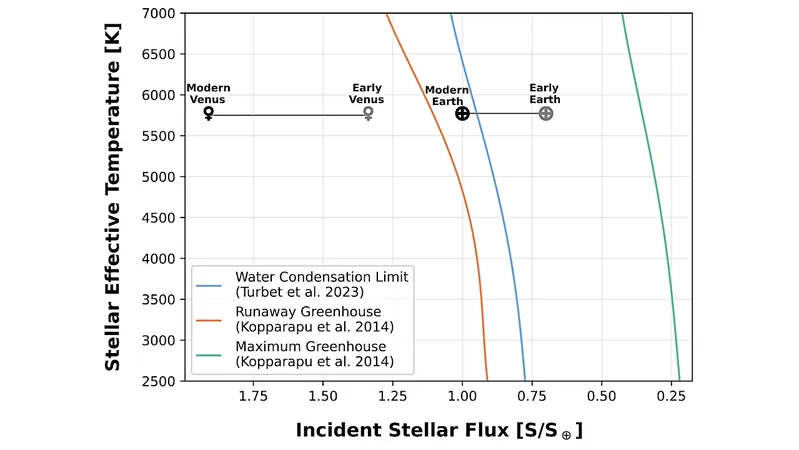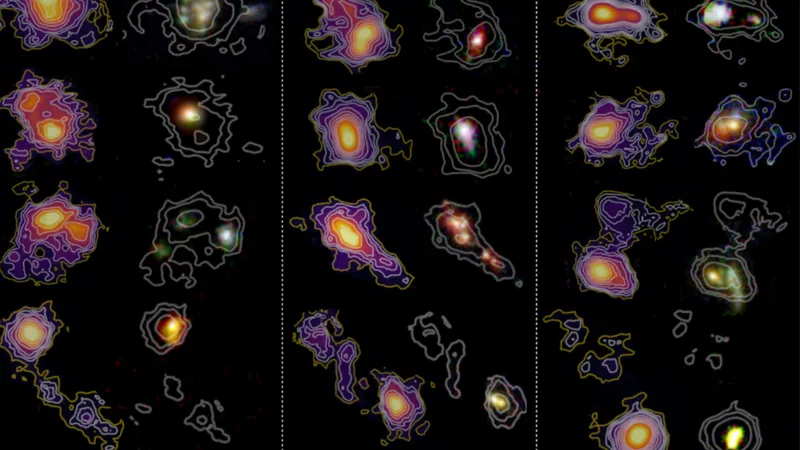
Unlocking the Secrets of Life: Prioritizing Targets for the Habitable Worlds Observatory
2025-05-28
Author: Rajesh
Are We on the Brink of Discovering Extraterrestrial Life?
Excitement is building around future space telescopes like NASA’s Habitable Worlds Observatory (HWO), which promises to push the boundaries of our search for life beyond Earth. For the first time, these advanced instruments will be capable of detecting and examining terrestrial exoplanets within the habitable zones (HZ) of nearby Sun-like stars.
Why Prioritizing Targets Matters
With the grand endeavor of scanning distant worlds requiring immense time and resources, it’s crucial to focus our efforts on systems with the highest probability of hosting detectable life. A new, innovative approach proposes to estimate how likely it is that these exoplanets have remained in the habitable zone long enough for life to potentially develop and leave a mark on their atmospheres.
Introducing the Continuous Habitable Zone Metric
Using a Bayesian statistical method, researchers are calculating the chances that a given orbital radius around a star falls within the Continuous Habitable Zone (CHZ2)—the period estimated for life on Earth to oxygenate our atmosphere significantly. This groundbreaking metric not only assesses habitability but also prioritizes the best candidates for observation.
A Closer Look at Nearby Stars
In their work, scientists analyzed 164 stars listed in NASA's Exoplanet Exploration Program Mission Star List (EMSL). These stars, akin to our Sun, represent a prime selection for HWO’s direct imaging. By evaluating the CHZ2 likelihood across various orbital radii, they have established a framework for determining which candidates should be targeted for observation based on their accessibility and potential.
Finding Habitable Stars
The findings reveal that the CHZ2 metric peaks between 3 and 4 billion years for late-F and early-G dwarf stars. Interestingly, stars warmer than roughly 6600 K (around F3 spectral type) appear to lack a CHZ2, challenging our assumptions about which stars might host life.
The Future of Astrobiology
As researchers continue to refine these techniques, the potential for uncovering extraterrestrial life looms larger on the horizon. With the right priorities, the Habitable Worlds Observatory might soon find planets where life not only exists but could be observable—bringing humanity one step closer to answering the age-old question: Are we alone in the universe?



 Brasil (PT)
Brasil (PT)
 Canada (EN)
Canada (EN)
 Chile (ES)
Chile (ES)
 Česko (CS)
Česko (CS)
 대한민국 (KO)
대한민국 (KO)
 España (ES)
España (ES)
 France (FR)
France (FR)
 Hong Kong (EN)
Hong Kong (EN)
 Italia (IT)
Italia (IT)
 日本 (JA)
日本 (JA)
 Magyarország (HU)
Magyarország (HU)
 Norge (NO)
Norge (NO)
 Polska (PL)
Polska (PL)
 Schweiz (DE)
Schweiz (DE)
 Singapore (EN)
Singapore (EN)
 Sverige (SV)
Sverige (SV)
 Suomi (FI)
Suomi (FI)
 Türkiye (TR)
Türkiye (TR)
 الإمارات العربية المتحدة (AR)
الإمارات العربية المتحدة (AR)